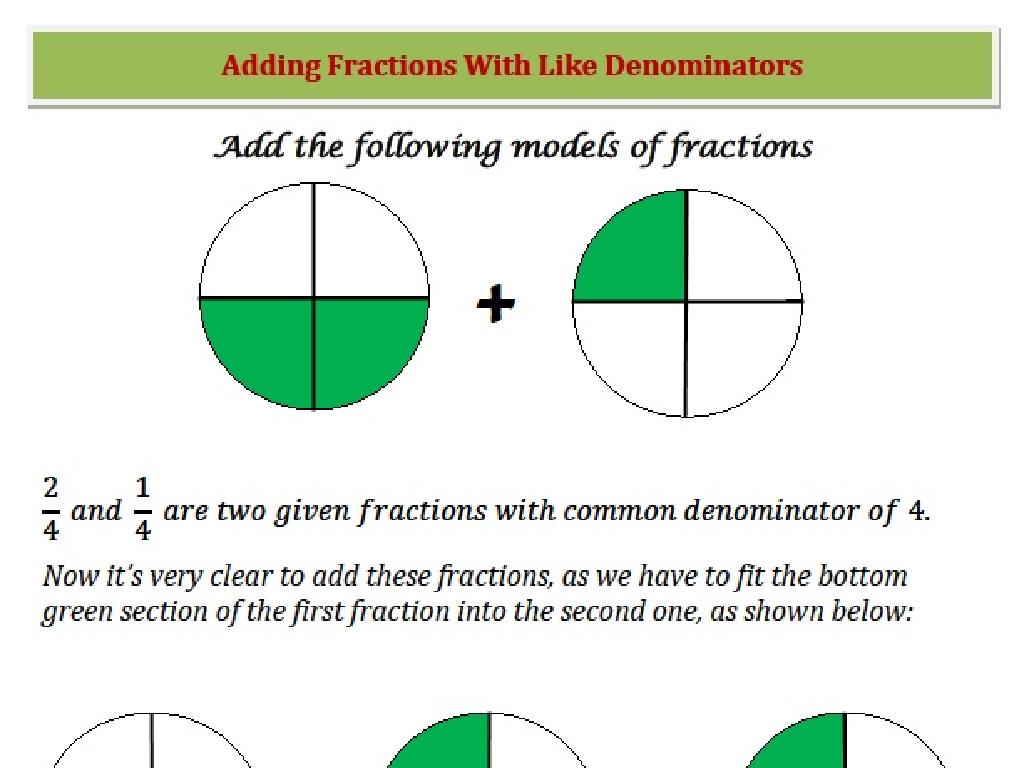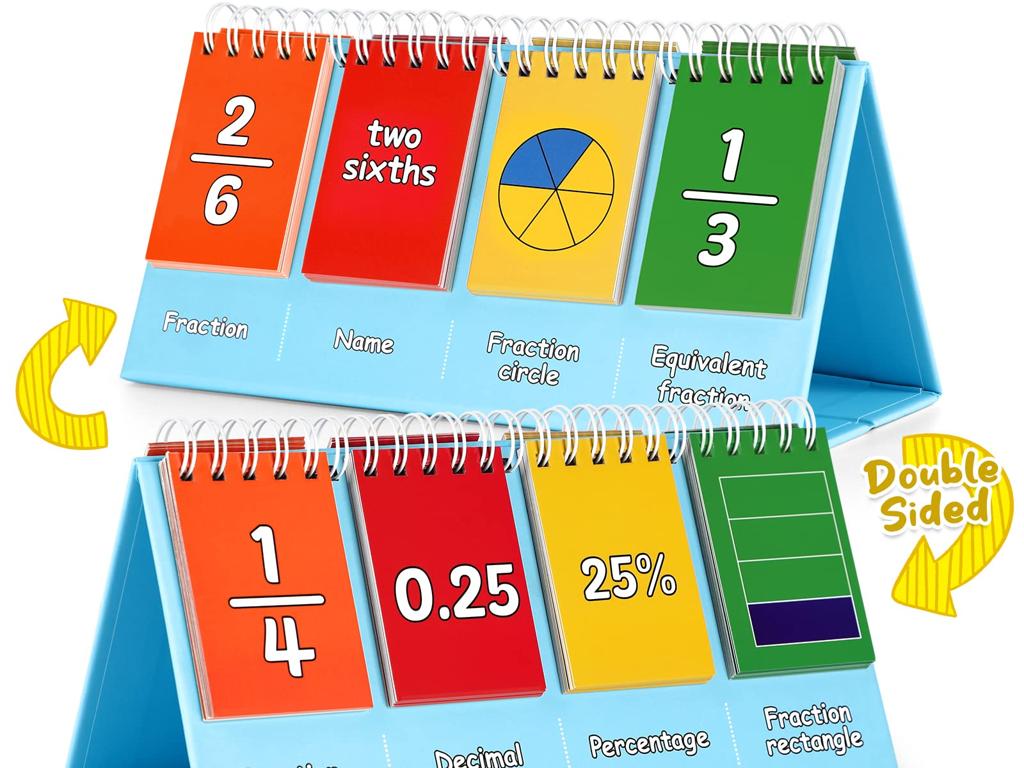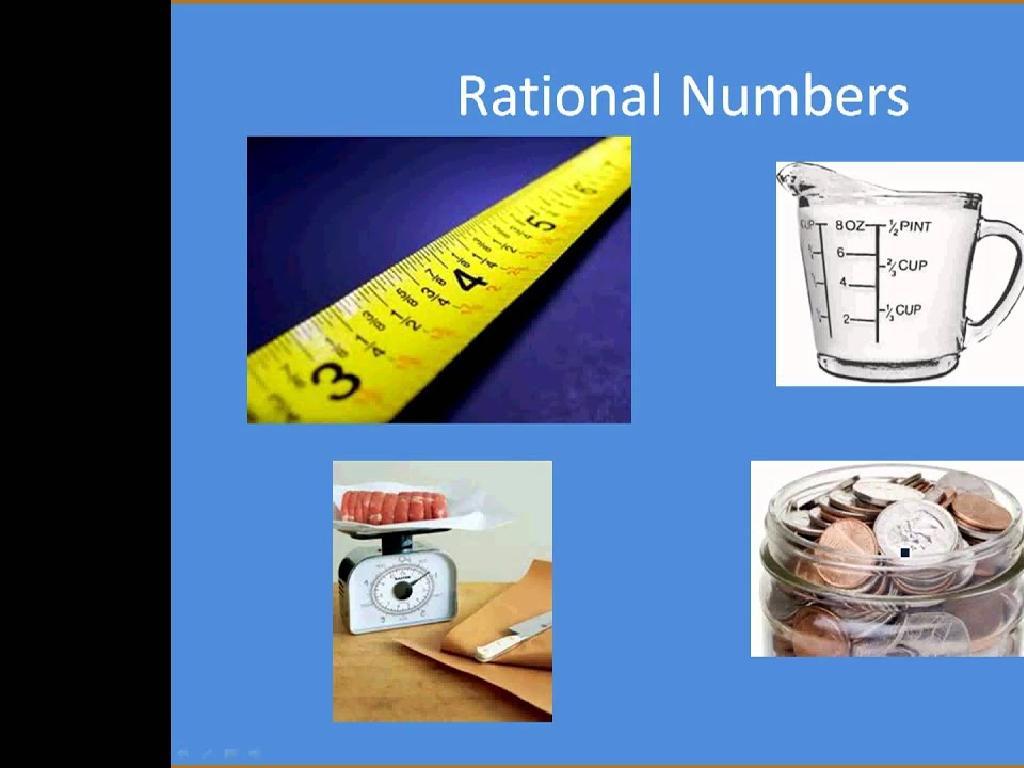Identify Lines Of Symmetry
Subject: Math
Grade: Fourth grade
Topic: Symmetry
Please LOG IN to download the presentation. Access is available to registered users only.
View More Content
Welcome to Symmetry!
– Understanding Symmetry
– Symmetry means balance or form; both sides are the same
– The importance of Symmetry
– Symmetry creates beauty and efficiency in design
– Symmetry in our world
– Nature: butterfly wings, human faces. Man-made: buildings, art
– Recognizing symmetrical objects
– Look for objects that can be split into mirror images
|
This slide introduces the concept of symmetry, which is a fundamental part of geometry. Symmetry refers to a balance or form where one side of an object is a mirror image of the other. It’s important because it’s found everywhere in nature and is used in art, architecture, and design to create aesthetically pleasing and efficient structures. Provide examples like butterfly wings, leaves, and even the human face to illustrate natural symmetry. Also, point out man-made symmetrical objects such as buildings and various art forms. Encourage students to start recognizing symmetrical objects in their surroundings and understand that symmetry is not just a mathematical concept but a property that makes the world more beautiful and organized.
Understanding Symmetry: Reflective Symmetry
– What is symmetry?
– Symmetry means balance in shape and form.
– Types of symmetry
– Reflective, Rotational, Translational are symmetry types.
– Today’s focus: Reflective
– Reflective symmetry, also known as mirror symmetry, involves flipping over a central line.
– Reflective symmetry in objects
– Find objects that can be split into identical halves.
|
Begin the lesson by explaining the concept of symmetry as a fundamental form of balance and harmony in shapes. Introduce the three types of symmetry, emphasizing that today’s lesson will focus on reflective symmetry. Explain reflective symmetry using examples like a butterfly’s wings or a heart shape, which can be divided into two identical halves along a central line. Encourage students to think of and bring examples of reflective symmetry from their environment. This will help them recognize symmetry in everyday objects and understand its application in mathematics and the natural world.
Reflective Symmetry: Finding the Line of Symmetry
– Reflective symmetry is like a mirror
– Imagine folding a picture to match both sides
– Line of symmetry divides equally
– One shape becomes two identical parts
– Each side mirrors the other
– Compare one side to the other side
– Practice with different shapes
– Try drawing lines on various shapes to test symmetry
|
This slide introduces the concept of reflective symmetry, which is a fundamental aspect of geometry. Reflective symmetry, often compared to a mirror image, occurs when a line of symmetry divides a shape into two equal and identical parts. Each side of the shape is an exact reflection of the other. To help students grasp this concept, encourage them to visualize folding a shape along the line of symmetry to see if the sides match perfectly. Provide various shapes for students to practice drawing lines of symmetry, such as squares, rectangles, and circles. This hands-on activity will reinforce their understanding of how to identify lines of symmetry in different shapes.
Identifying Lines of Symmetry
– Finding a Line of Symmetry
– A line of symmetry divides a shape into mirrored halves.
– Multiple Lines of Symmetry
– Shapes like a circle can have infinite lines of symmetry.
– Some Shapes Lack Symmetry
– Shapes without symmetry don’t have mirrored halves.
– Symmetry in the World Around Us
– Look for symmetry in butterflies, leaves, and buildings.
|
This slide introduces students to the concept of symmetry, focusing on how to identify lines of symmetry in various shapes. Start by explaining that a line of symmetry is where a shape can be folded or divided into two identical parts. Highlight that while some shapes, such as circles, can have many lines of symmetry, others, like scalene triangles, may not have any. Encourage students to explore their environment to find examples of symmetry, which will help them understand the concept better. Provide hands-on activities where students can fold paper shapes to visually see the lines of symmetry. This will also enhance their spatial reasoning skills.
Lines of Symmetry in Shapes
– Circle: infinite symmetry lines
– Every diameter of the circle is a line of symmetry.
– Square: four symmetry lines
– A square’s sides and diagonals are symmetry lines.
– Triangle: varies by type
– Equilateral has 3, isosceles has 1, scalene has 0.
– Exploring symmetry in class
|
This slide introduces students to the concept of lines of symmetry in various shapes. A circle has an infinite number of lines of symmetry because every diameter cuts it into two identical halves. A square has four lines of symmetry, two along the diagonals and two that bisect opposite sides. Triangles have varying lines of symmetry; an equilateral triangle has three, an isosceles has one, and a scalene has none. Encourage students to draw these shapes and experiment with folding them to find the lines of symmetry. This hands-on activity will help solidify their understanding of symmetry in different geometric figures.
Symmetry in Nature
– Symmetry is all around us
– Nature’s symmetry: butterflies & leaves
– Look at the wings of a butterfly or the shape of leaves
– Human faces have symmetry too
– Our faces are symmetrical with two eyes, a nose in the middle, and a mouth
– Discover symmetry in everyday life
– Find objects at home or outside that are symmetrical
|
This slide aims to introduce students to the concept of symmetry through examples they can find in their environment. Symmetry is a balanced and proportionate similarity found in two halves of an object, that is, one half is the mirror image of the other half. Encourage the students to observe the world around them to find natural examples of symmetry, such as the wings of a butterfly or the leaves on a tree. Discuss how even human faces exhibit symmetry. For homework, ask students to find and bring examples of symmetrical objects they find at home or outside. This will help them understand symmetry in a practical and engaging way.
Activity: Find the Line of Symmetry!
– Draw symmetry lines on shapes
– Fold paper shapes to find the invisible line
– Use a ruler for straight lines
– A ruler ensures the line is perfectly straight
– Share your findings with the class
– Discuss which shapes were easy or hard
|
This activity is designed to help students identify lines of symmetry in various shapes by drawing them. Provide different shapes on paper for students to fold and find the symmetrical halves. Encourage them to use rulers to draw straight lines where the fold appears. After the activity, have a discussion session where students can share which shapes were easier or harder to find symmetry in and why. This will help them understand symmetry in a practical way. For the teacher: Prepare various symmetrical and asymmetrical shapes in advance. Guide the students on how to properly fold the shapes to find the line of symmetry. Have extra rulers available. Consider creating a gallery of the students’ shapes with the drawn lines of symmetry to display in the classroom.
Class Activity: Create Your Own Symmetrical Art!
– Fold paper in half
– Paint on one side
– Use bright colors for a beautiful pattern
– Press sides together
– Make sure to align the edges carefully
– Unfold to reveal symmetry
– Discover the magic of symmetry in art!
|
This hands-on activity is designed to help students understand the concept of symmetry through art. By folding a paper in half and only painting on one side, students will see how the paint transfers to the other side to create a symmetrical design once pressed together. It’s a visual and tactile way to demonstrate lines of symmetry. Teachers should ensure that students fold the paper neatly down the middle and apply the paint on one side of the fold. After pressing the sides together, students will unfold the paper to reveal a symmetrical pattern. Encourage creativity and have students share their artwork with the class to discuss the symmetrical patterns they created. Prepare for a bit of mess and have cleaning supplies ready.
Symmetry Recap & Classroom Exploration
– Recap: What is symmetry?
– Symmetry is when two halves of a whole match perfectly.
– The usefulness of understanding symmetry
– Symmetry helps in art, design, and understanding nature.
– Finding symmetry around us
– Look around to find objects with symmetrical shapes.
– Review with classroom examples
|
As we conclude our lesson on symmetry, let’s review the key points. Symmetry is a fundamental concept where an object or design can be divided into two parts that are mirror images of each other. Understanding symmetry is important as it is present in many areas of life, including art, architecture, and nature. Encourage students to look around the classroom and identify objects that have lines of symmetry. This will help them relate the concept to real-world objects and see the practical application of what they’ve learned. Ask students to share their examples and explain the symmetry they observe. This interactive review will reinforce their understanding and make the concept more memorable.






